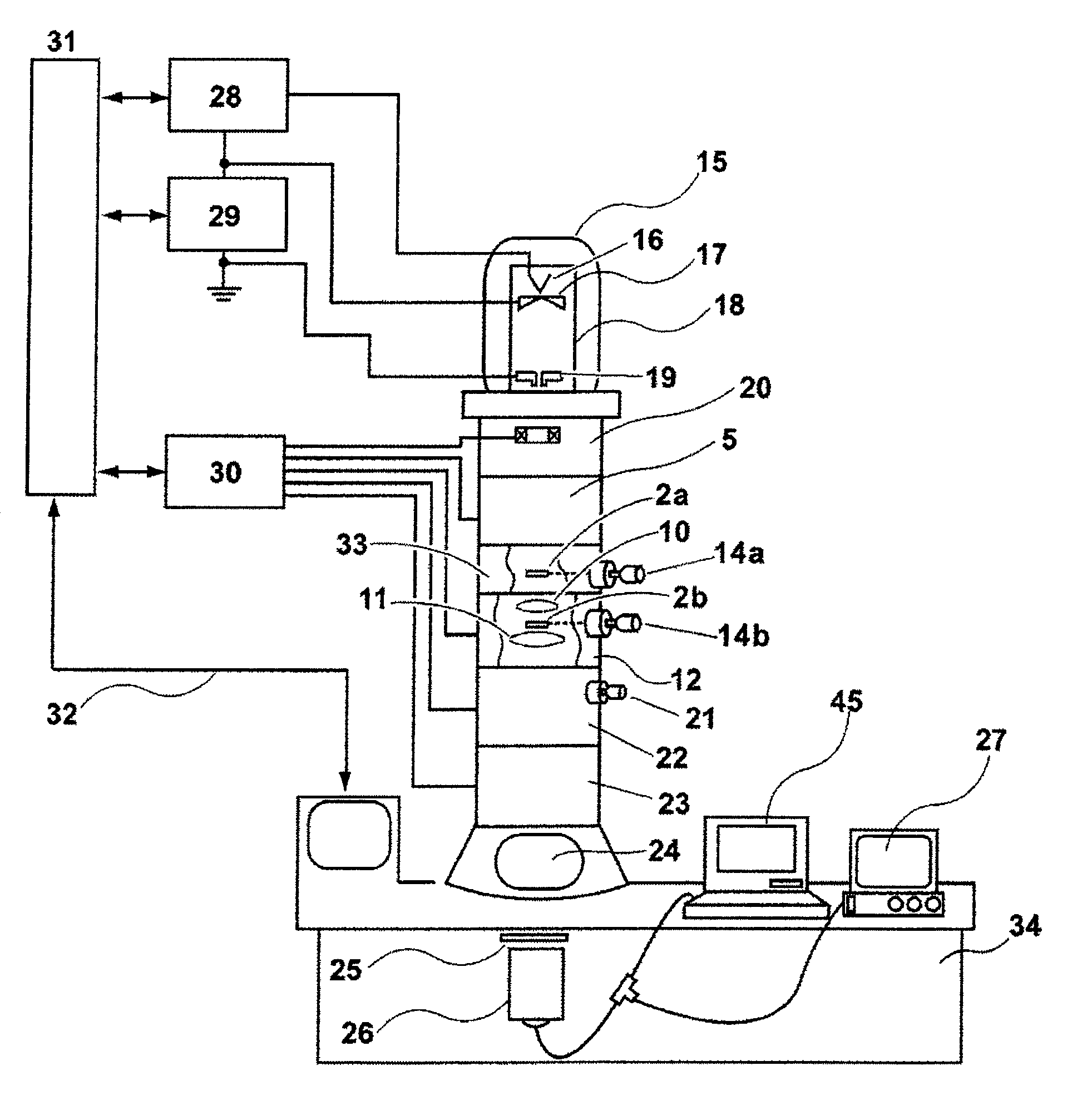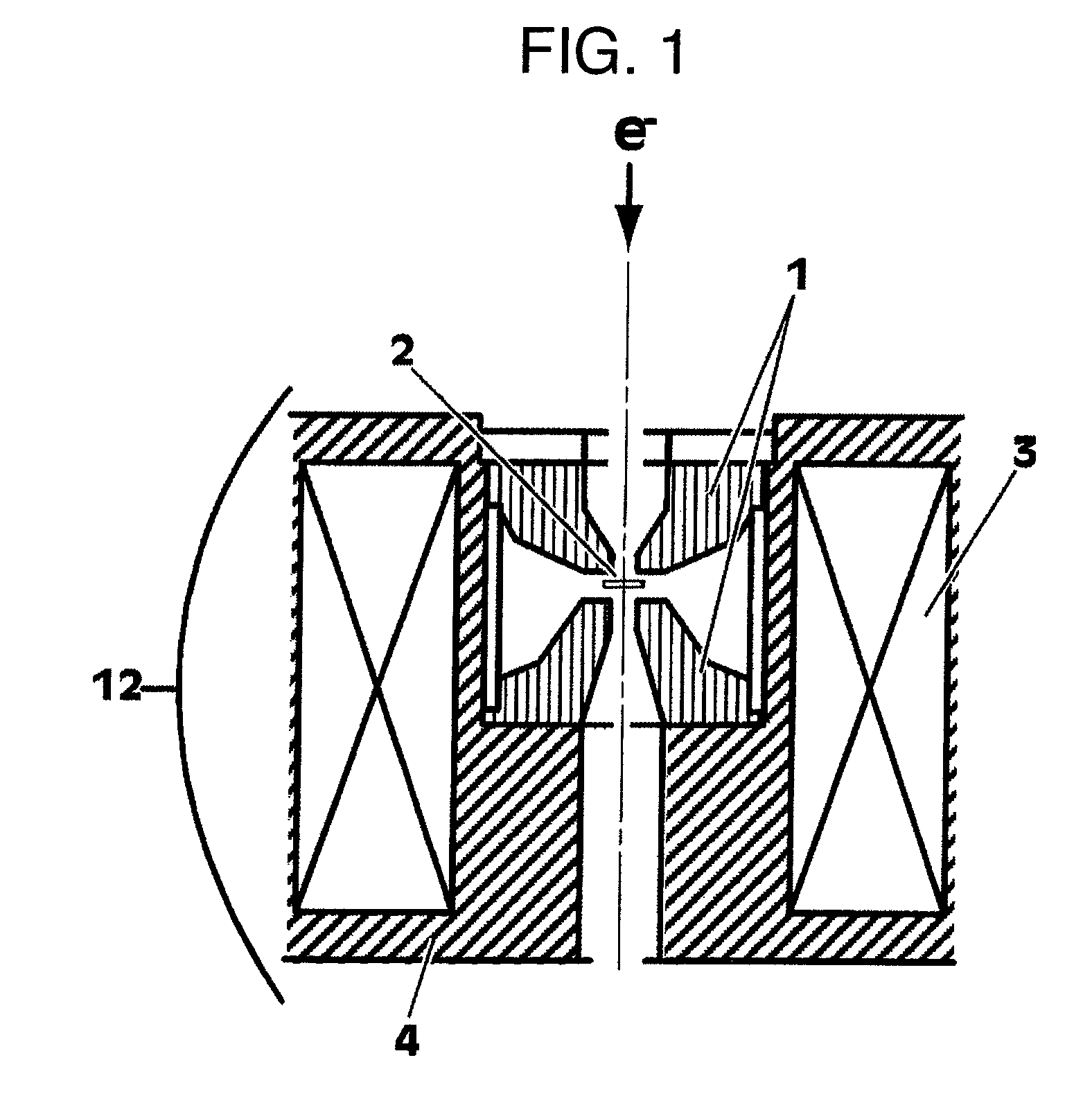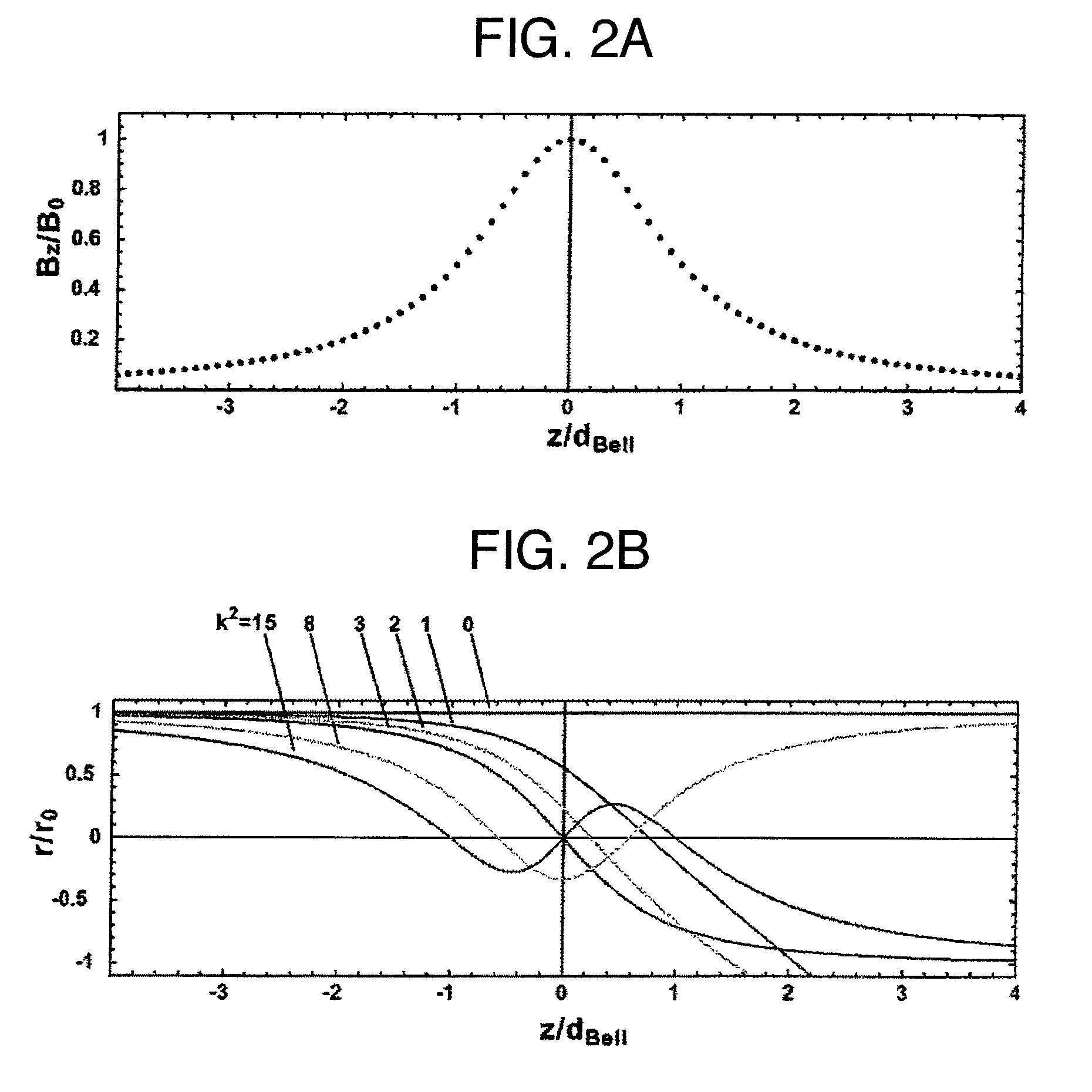Electron beam observation device using pre-specimen magnetic field as image-forming lens and specimen observation method
a technology of image-forming lens and electron beam, which is applied in the direction of magnetic discharge control, instruments, nuclear engineering, etc., can solve the problems of insufficient size measurement accuracy, insufficient reproducibility of electronic optical system, and insufficient volume production of standard specimens suitable for magnification calibration and low cost, etc., to suppress the effect of effective magnifying power of the objective lens
- Summary
- Abstract
- Description
- Claims
- Application Information
AI Technical Summary
Benefits of technology
Problems solved by technology
Method used
Image
Examples
embodiment 1
[0044]FIG. 4 schematically shows disposition of a TEM to which the present invention is applied. An electron gun 15 comprises an electron source 16 constituted of tungsten needle single crystal with a tip end sharpened, a lead-out electrode 17 placed at a position opposed thereto, a ground electrode 19 and an accelerating tube 18 for accelerating electrons which are led out. High voltage can be applied to the lead-out electrode 17 by a lead-out power supply 28 provided outside, and the lead-out electrode 17 can lead out electrons by application of voltage of about −3.0 to −2.5 kV between the electron source 16 and the lead-out electrode 17. Accelerating voltage for accelerating the electrons which are led out is supplied to the accelerating tube 18 by an accelerating voltage power supply 29. The electron beams emitted from the electron gun 15 are set at a desired irradiation condition in an intermediate chamber 20 including an alignment coil and a condenser lens 5, and are irradiate...
embodiment 2
[0061]FIG. 11 shows an example of application of the present invention to observation of a magnetic domain structure of a magnetic material. When only the specimen A 2a of the specimen position 7 outside the objective lens 12 is left on the optical axis and the influence of the lens magnetic field is small enough to be ignored, the magnetic specimen is placed at this position, and can be observed as if the specimen were disposed at the ordinary specimen position 8. FIG. 11 shows a Lorents microscope method for magnetic domain structure observation. The Lorents microscope method is the method for observing the boundary line (magnetic wall) of a magnetic domain as white and black contrast 48 on a surface formed by shifting the screen 13 by a defocus amount 47, since the magnetic information of the specimen cannot be obtained from the normal focus image 46 on the ordinary screen 13.
[0062]A similar observation method can be achieved by extremely decreasing an objective lens current. How...
embodiment 3
[0063]The present embodiment effectively uses the fact that the space around the specimen placed above the objective lens is not restricted by the objective lens magnetic pole piece. The outline is shown in FIG. 12. In the embodiment, a specimen holder 14a is disposed in a specimen chamber 33 directly above the objective lens 12. Since a device and a mechanism which restrict the space do not exist in the specimen chamber 33, the space can be effectively used. FIG. 12 is an example in which a detector 37 of an X-ray is inserted into the space. The detector has been conventionally inserted in the vicinity of the magnetic pole pieces 1 of the objective lens and has been spatially restricted. Therefore, a capture angle for X-rays cannot be taken large, and there is the disadvantage of having to take a long integral time in order to perform highly accurate analysis from a very small X-ray amount. In the present embodiment, the capture angle can be made large, and the time required for an...
PUM
 Login to View More
Login to View More Abstract
Description
Claims
Application Information
 Login to View More
Login to View More - R&D
- Intellectual Property
- Life Sciences
- Materials
- Tech Scout
- Unparalleled Data Quality
- Higher Quality Content
- 60% Fewer Hallucinations
Browse by: Latest US Patents, China's latest patents, Technical Efficacy Thesaurus, Application Domain, Technology Topic, Popular Technical Reports.
© 2025 PatSnap. All rights reserved.Legal|Privacy policy|Modern Slavery Act Transparency Statement|Sitemap|About US| Contact US: help@patsnap.com



